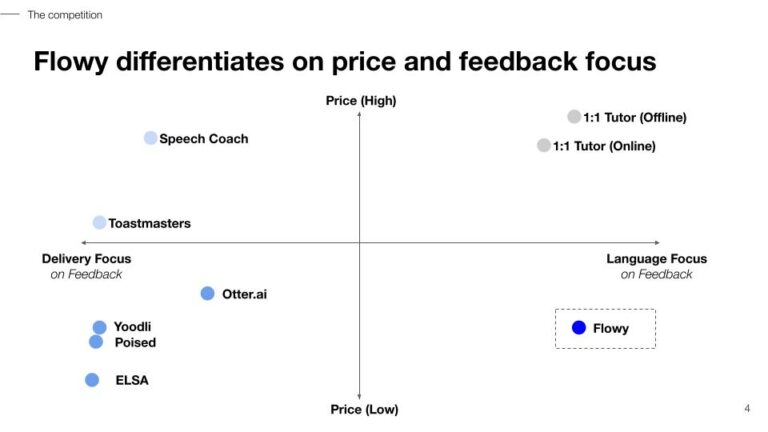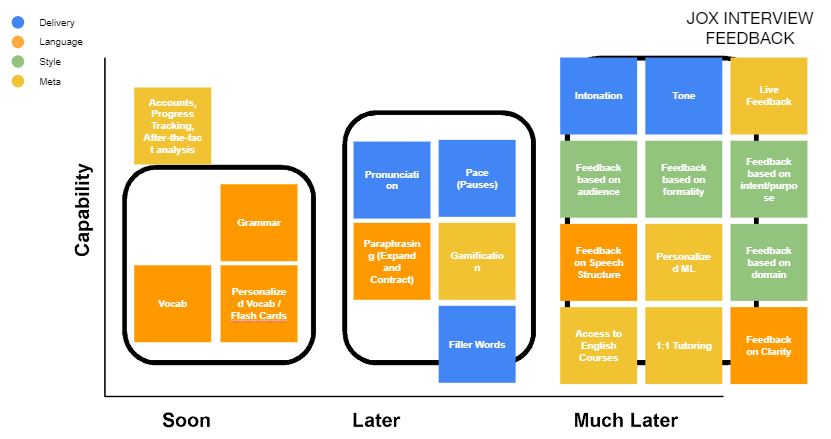Comparative Research
The first quadrant shows the traditional methods of 1:1 tutoring (with a focus on the English language but it is very expensive). The second quadrant has traditional methods, which mostly focus on delivery. The third quadrant comprises various tech startups focusing on speech. However, these products provide feedback based on delivery (i.e., filler words, pace). Flowy is different in the sense that it focuses on the language aspect of speech feedback, such as suggested expressions and paraphrasing.

Participatory Roadmap

I interviewed two non-native English speakers (Spain and Jordan) and the main findings are the following:
- Vocabulary and pronunciation are the most critical.
- Two problems spaces: one is speaking (a matter of confidence). When you get over it, the problem is that don’t have the vocabulary. Do I care about my spanish accent? Not really.
- The transformational was to study for GRE and read the NYTimes and learn the vocabulary.
- This builds fluidity and confidence.
- I used to study with flashcards to improve vocab.
- Pace is not relevant – I know I speak too fast even in Spanish.
- Pronunciation – just make sure that people have the basics. Which is the target? People aiming to live in the US? Those already can make them understand with their current pronunciation. Do I need a perfect one? Not really?
- Tone/intonation concepts are unclear.
- Live feedback looks confusing. Current prototype feature (after-the-event feedback) looks cool.
Findings through prototype trial and observation:
- Most friends are worried about english when coming to the US.
- Shocked when using the prototype – showed enthusiasm.
- Numbers generate confusion – wants to understand the diff. between concepts (intonation, pace, etc) and the significance of the numbers.
- The feedback should be focused on how to improve – and examples of best practices could be helpful.
- How can we track if we are getting better or worse?
